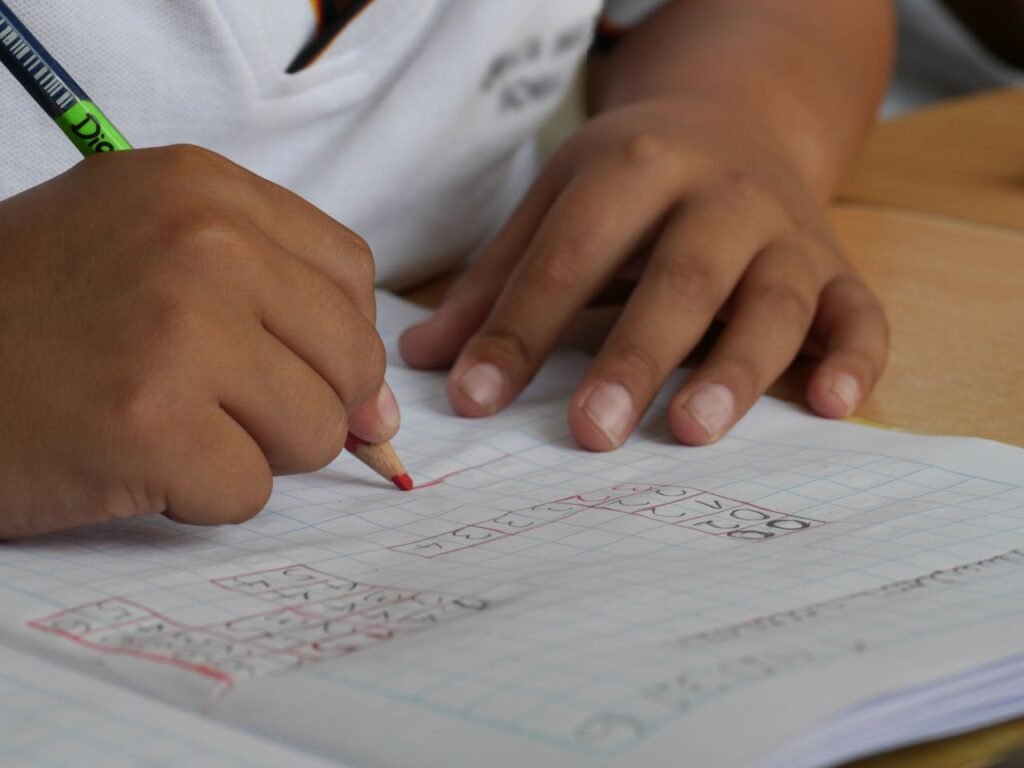You hear sounds all the time — your friend’s voice, the hum of a fridge, the strum of a guitar, the chirping of birds outside your window. But have you ever stopped to ask, “How does sound actually get from there… to here?”
Sound is a traveler. It moves from one place to another, carrying information — like a message, a song, or even a warning. Sometimes it moves through the air. Sometimes it moves through water or metal. But sometimes… it doesn’t move at all. Out in the vastness of space, sound simply can’t travel.
In this guide, we’ll explore how sound begins, how it travels, what it needs to survive the journey, and why silence rules in space. We’ll keep things simple, relatable, and full of real-life examples so you can see sound in a whole new way.
What Is Sound, Really?
Sound is energy — but it’s a special kind of energy. It’s made when something vibrates. A vibration is simply a quick back-and-forth movement. That movement shakes the particles around it, and those particles pass the movement along to others. That’s how sound begins its journey.
Think of it like passing a secret note in class: one person gives it to the next, who gives it to the next, and so on. The note itself (the sound) travels without each person (particle) moving all the way from the start to the end.
The Birth of a Sound
Imagine plucking a guitar string. The moment your finger lets go, the string moves back and forth very quickly — hundreds of times per second. This movement pushes the air particles around it, creating tiny squeezes and stretches in the air called sound waves.
The same thing happens when you clap your hands, tap a glass, or shout across a playground — vibrations start in one place, and the sound spreads outward in waves.
Sound Needs a Medium
Here’s something important: sound cannot travel through nothing. It needs a medium — a substance like air, water, or a solid — to carry it.
That’s because sound moves by making particles bump into each other. Without particles, there’s nothing to bump into, and the sound just… stops. That’s why space is silent.
The Three Main Mediums for Sound
- Air – This is where we hear most sounds. Voices, music, and street noise all travel through air.
- Water – Sound can also travel through water, and it actually moves faster there because the particles are closer together. That’s how dolphins and whales communicate over long distances.
- Solids – Sound moves fastest through solids like metal, wood, or stone, because their particles are packed tightly. That’s why you can hear a train coming if you press your ear to the tracks.
Why Speed Changes
The speed of sound depends on what it’s moving through:
- In air (at normal temperature): about 343 meters per second.
- In water: about 1,480 meters per second.
- In steel: about 5,960 meters per second.
The tighter the particles are packed, the quicker the sound can pass along the vibration.
How Sound Waves Travel

Once a sound begins, it moves like a ripple in a pond — except instead of water, it’s moving through air, water, or a solid. Sound travels as waves made up of tiny squeezes and stretches in the particles of whatever it’s moving through. These squeezes are called compressions, and the stretches are called rarefactions.
Imagine a row of kids standing shoulder to shoulder. The first kid gently bumps the next, who bumps the next, and the movement passes along the line. Nobody runs all the way down the row — they just pass the “push” along. That’s exactly how sound waves move.
Pitch – Why Some Sounds Are High and Others Low
Pitch is how high or low a sound feels to your ears. It depends on how fast the vibrations are:
- Fast vibrations = high pitch (like a bird’s chirp, a whistle, or the squeak of a swing).
- Slow vibrations = low pitch (like a drumbeat, a deep voice, or distant thunder).
If you’ve ever played with a rubber band stretched across a box, you’ll notice:
- Pull it tight and pluck it — you get a higher note.
- Keep it loose and pluck it — you get a lower note.
That’s because a tighter band vibrates faster, while a looser band vibrates slower.
Volume – Why Some Sounds Are Loud and Others Soft
Volume depends on the size of the vibrations, or what scientists call amplitude.
- Big vibrations = loud sound (like clapping hard or slamming a door).
- Small vibrations = soft sound (like tapping your fingers on a table).
Picture a swing: a gentle push makes it move just a little (soft sound), while a strong push makes it swing high (loud sound).
Fun Experiments to See and Feel Sound
1. The Rice-on-Drum Experiment
- Stretch plastic wrap over a bowl and hold it tight with a rubber band.
- Sprinkle a few grains of uncooked rice on top.
- Clap your hands or bang a pot nearby.
The rice will jump and dance. What you’re seeing is the sound wave shaking the air, which shakes the plastic, which moves the rice.
2. The Tuning Fork in Water
- Hit a tuning fork gently on something soft so it vibrates.
- Touch it to the surface of a bowl of water.
The vibrations make ripples spread out, just like sound spreads in the air.
3. Balloon Ear Amplifier
- Blow up a balloon and hold it close to your ear.
- Tap the surface lightly.
You’ll hear the sound louder than normal because the balloon’s skin passes the vibrations straight to your ear.
How Your Ears Catch Sound
When a sound wave reaches your ear, it makes your eardrum vibrate. Behind your eardrum are three tiny bones — the hammer, anvil, and stirrup — that pass the vibrations to the cochlea, a curled-up part of your inner ear filled with fluid and tiny hairs.
These hairs move with the vibration, turning it into tiny electrical signals that your brain can read. Your brain then says, “That’s music,” “That’s Mom’s voice,” or “That’s the dog barking.”
In less than a blink, vibrations have turned into meaning.
Why Sound Can’t Travel in Space

Earlier, we said sound needs a medium — air, water, or a solid — to travel. That’s because sound moves by making particles bump into each other, passing along vibrations.
But space? Space is a vacuum — which means there are almost no particles. Without particles to bump into, there’s no way for vibrations to move. It’s like trying to play “pass the message” with no one in the line. The sound has nowhere to go.
That’s why if you were standing on the moon (in a spacesuit, of course) and another astronaut a few meters away banged two rocks together, you wouldn’t hear it — no matter how loud it was.
Movies vs. Reality
You’ve probably seen space battles in movies with loud explosions and roaring engines. In reality, those scenes would be completely silent in space. The only sound an astronaut would hear is the one inside their own suit or ship, carried through the air or solid materials around them.
How Astronauts Hear and Talk
Astronauts can still talk to each other in space — they just need to bring the medium with them.
- Inside a spacecraft: There’s air, so sound works normally. You can talk, shout, or play music, and it will travel just like on Earth.
- Inside spacesuits: There’s also air, so astronauts can hear themselves breathe and speak.
- Between spacesuits: Astronauts use radios to turn their voices into electrical signals, send them as radio waves, and then turn them back into sound on the other end.
This way, even though sound waves can’t cross the empty space between two people, radio waves can — and those don’t need air.
Vibrations Still Happen in Space
Even without sound, vibrations can still move through solids in space. If two astronauts were connected by a long metal pole, and one hit it with a hammer, the other could feel the vibration through the pole. That’s because solids have tightly packed particles, so the vibration can travel through them — just not through empty space in between.
A Fun Earth Experiment
You can try a mini version of “space communication” at home:
- Take two paper cups and connect them with a long, tight string.
- Speak into one cup while a friend listens with the other.
- The sound doesn’t travel through the air — it travels as vibrations through the string.
This is a bit like astronauts “feeling” vibrations through solid connections in space.
How Sound Travels in Water and Solids

Sound behaves differently depending on the medium it’s in. In air, sound is quick — but in water, it’s much quicker. And in solids, it’s faster still.
- In air (at room temperature): about 343 meters per second.
- In water: about 1,480 meters per second — over four times faster.
- In steel: around 5,960 meters per second — almost 17 times faster than air.
Why such a big difference? It all comes down to particle spacing.
- Air particles are far apart, so it takes longer for each one to “bump” the next.
- Water particles are closer together, so vibrations pass more quickly.
- Solid particles are packed tightly, making the “pass along” almost instant.
What This Means for How We Hear
In air, sound is familiar — voices, music, traffic. But underwater, the speed and strength of sound make it travel farther and sometimes sound strange to our ears. You might notice underwater sounds are muffled but seem to come from all directions. That’s because our ears aren’t used to hearing vibrations through water — they’re designed for air.
In solids, sound can be very direct. Press your ear to a table while someone taps the other side — it feels sharper and quicker. That’s the tight particle arrangement doing its job.
Animals That Use Sound in Water
Whales and Dolphins are the champions of underwater sound.
- Dolphins use echolocation — sending out clicks that bounce off objects and return. They can “read” these echoes to know an object’s distance, size, and even texture.
- Blue whales produce incredibly deep calls that can travel thousands of kilometers under the right conditions. These calls may be a way to stay in touch with others across the vast ocean.
The ocean is like a giant sound highway — quiet enough in some places for a single call to travel for hours.
Animals That Use Sound in Solids
Elephants have a fascinating trick.
- They create low-frequency rumbles that travel through the ground as vibrations.
- Other elephants can sense these vibrations through the sensitive skin on their feet.
- This allows them to communicate over long distances — even when they can’t see or hear each other in the air.
Spiders also rely on vibrations, though on a much smaller scale. A spider’s web acts like a giant ear, picking up the smallest tremor when prey is caught or another spider arrives.
Try This at Home – Testing Sound Speed
You can feel the difference in sound speed with three simple steps:
- In Air – Tap two metal spoons together and listen with your ears normally.
- In Water – Place the spoons underwater in a bowl and tap them. The sound will feel sharper and quicker.
- Through a Solid – Hold one end of a long broom handle to your ear while someone taps the other end. You’ll hear it almost instantly.
Fun Ways to See Sound

Sound is invisible, but it’s not impossible to see. Because sound is simply vibration moving through a medium, anything that can move with it can make those vibrations visible. With a few simple experiments, you can watch sound “come alive” right in front of your eyes.
1. The Dancing Rice Experiment
What you need:
- A large mixing bowl
- Plastic wrap
- A rubber band
- Uncooked rice or small sprinkles
- A metal pan or something loud to clap
Steps:
- Stretch the plastic wrap tightly over the top of the bowl, making sure it’s smooth and drum-like.
- Secure the wrap with a rubber band so it doesn’t slip.
- Sprinkle a light layer of uncooked rice or sprinkles onto the plastic.
- Stand close to the bowl and make a loud noise — clap your hands sharply or bang the metal pan.
What you’ll see: The rice jumps, dances, and bounces. This is sound energy in action — the noise creates vibrations in the air, which shake the plastic wrap, and those movements toss the rice around.
2. The Tuning Fork Ripple Test
What you need:
- A tuning fork
- A soft mallet or something gentle to strike it with
- A shallow bowl of water
Steps:
- Strike the tuning fork gently so it starts vibrating.
- Bring one vibrating tip close to the water’s surface and touch it lightly.
What you’ll see: Ripples race away in all directions. You can’t normally see the tuning fork’s rapid vibration, but the water shows it for you — turning invisible motion into visible waves.
3. The Balloon Sound Amplifier
What you need:
- One inflated balloon
Steps:
- Blow up the balloon and tie it securely.
- Hold the balloon so it rests gently against your ear.
- Lightly tap or scratch the surface of the balloon with your finger.
What you’ll notice: The sound is louder and more intense than you’d expect. The balloon’s surface sends the vibrations directly into your ear, showing how materials can boost sound.
4. The Guitar String Shadow Trick
What you need:
- A guitar or any stringed instrument
- A flashlight or desk lamp
Steps:
- Shine the light so it creates a clear shadow of one of the strings on the wall.
- Pluck the string and watch closely.
What you’ll see: The string’s shadow wobbles in a blur. Those tiny, rapid movements are exactly what’s creating the sound you hear.
Why These Experiments Work
Each of these activities takes the idea of invisible vibrations and turns them into something you can see or feel. This makes sound less of a “mystery” and more of a real, physical thing happening right in front of you. Once kids see that sound is simply movement passing from one place to another, they’re much more confident in explaining it.
How Debsie Helps Kids Understand Sound

At Debsie, we believe science is best learned when it’s not just heard or read about — but seen, felt, and experienced. Sound is the perfect example. Kids can relate to it instantly because it’s part of their world every single moment. But most have never stopped to think how it works.
Our job is to make that invisible journey of sound so clear and exciting that your child can explain it better than some adults — and have fun while doing it.
1. Turning Classrooms into Sound Labs
Instead of only showing pictures in a book, our partner teachers create hands-on mini sound labs:
- Students pluck strings, tap glasses, or hit drums to see vibrations start.
- They place balloons against their ears to feel sound travel directly.
- They watch rice “dance” on a stretched plastic sheet to make invisible waves visible.
By handling the materials themselves, they connect the dots between vibration, medium, and sound.
2. Linking Sound to Everyday Life
We help kids become “sound detectives.” Once they know the basics, we ask them to spot sound in their day:
- The hum of a fridge (constant vibration)
- The knock of footsteps on the floor (sound through solids)
- The echo in an empty room (reflected sound waves)
They bring these real-life observations back to class, turning learning into an ongoing adventure.
3. Making Complex Ideas Simple
Terms like “compression” and “rarefaction” can scare kids — unless they’re explained simply. Our teachers use:
- Domino lines to show how sound moves through particles.
- Playground swings to explain pitch and amplitude.
- Water ripples to demonstrate how waves spread out.
No jargon, no memorizing without meaning — just clear, visual teaching.
4. Encouraging Curiosity
When a student asks, “Why can’t we hear in space?” we don’t just tell them — we recreate it. We show how a vacuum jar stops sound because there’s no air to carry the vibration. The more “what if” moments they get, the deeper their understanding grows.
5. Building Confidence Through Challenges
We end our sound lessons with fun challenges:
- Build a working paper cup telephone.
- Create a sound wave demonstration for the class.
- Guess an object by its sound alone.
This way, kids aren’t just learning about sound — they’re using it, experimenting with it, and explaining it in their own words.
Why Learning About Sound Matters Beyond Science Class
Most people think learning about sound is just a science topic — something you memorize for a test and then forget. But in reality, understanding sound changes the way kids notice the world, the way they communicate, and even the way they think. It’s not just about knowing “what” sound is — it’s about gaining life skills that will stick with them forever.
1. Sharper Listening and Observation Skills
When kids truly understand how sound works, they start to listen differently.
- They notice tiny details in the world around them — the faint echo in a stairwell, the way voices sound different outside compared to indoors, or the low rumble of distant thunder before a storm.
- They learn to tell whether a sound is near or far, loud or soft, high or low — and why.
This kind of listening sharpens their focus and helps them become more observant in all areas of life.
2. Better Communication and Self-Expression
Sound isn’t just something we hear — it’s something we use. Kids who understand sound learn how to control their own voices:
- Speaking more clearly so people can understand them.
- Adjusting volume depending on the space they’re in.
- Changing pitch and tone to make their speech more interesting and engaging.
These skills make them better at giving presentations, telling stories, acting in plays, or even just chatting confidently with friends and family.
3. Opening Doors to Future Careers
Sound is everywhere in the professional world, not just in science labs:
- Musicians and singers use sound knowledge to tune instruments and create specific effects.
- Engineers and architects design rooms, stadiums, and theaters with sound in mind.
- Movie sound designers build entire worlds using sound effects.
- Doctors and scientists use sound waves in technology like ultrasounds and sonar.
- Astronauts rely on sound-based communication systems in space missions.
By understanding sound early, kids gain a head start in a wide range of possible careers.
4. Boosting Curiosity and Problem-Solving Skills
Sound naturally invites “what if” thinking.
- What if we could send music across the ocean using only sound?
- How can we make my voice sound like a robot?
- Why do my footsteps sound different on wood, carpet, and concrete?
These questions spark experiments, encourage tinkering, and help kids think like inventors. They learn not just to accept what they hear, but to explore it, test it, and understand it. Therefore curiosity helps in learning.
Conclusion – Helping Kids Hear the World Differently
Sound is more than just noise. It’s music, laughter, warnings, and discoveries. It’s the hum of life around us — and when kids understand how it works, they gain more than knowledge. They gain the ability to notice details, ask smarter questions, and see the invisible connections that make the world work.
From the gentle vibration of a guitar string to the absolute silence of outer space, sound tells a story about energy, movement, and communication. And once kids know that story, they can retell it in their own words, with confidence and excitement.
At Debsie, we don’t just explain how sound travels — we help children experience it. Through hands-on experiments, real-world examples, and engaging challenges, we make sure your child not only remembers the lesson but carries it into everyday life.
📢 Your child’s journey into the science of sound can start today.
🎯 Book a free trial class now and watch them discover the vibrations, waves, and wonders that make up the soundtrack of our world.
Read next:



